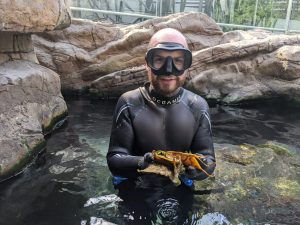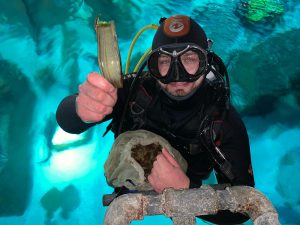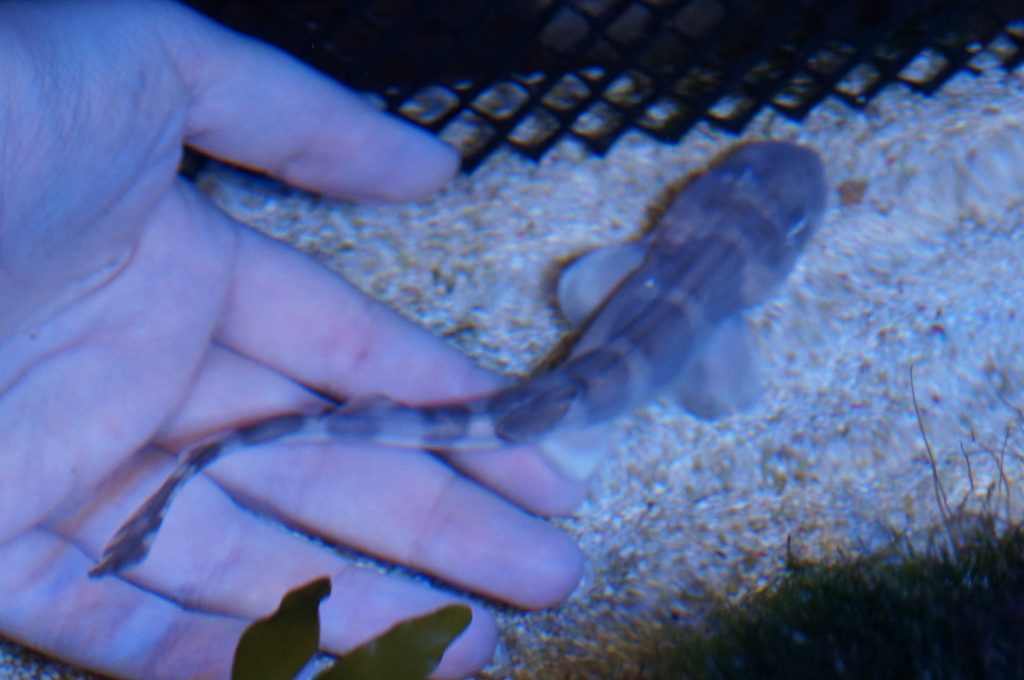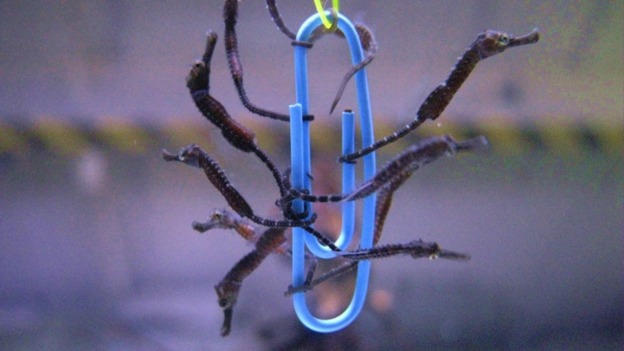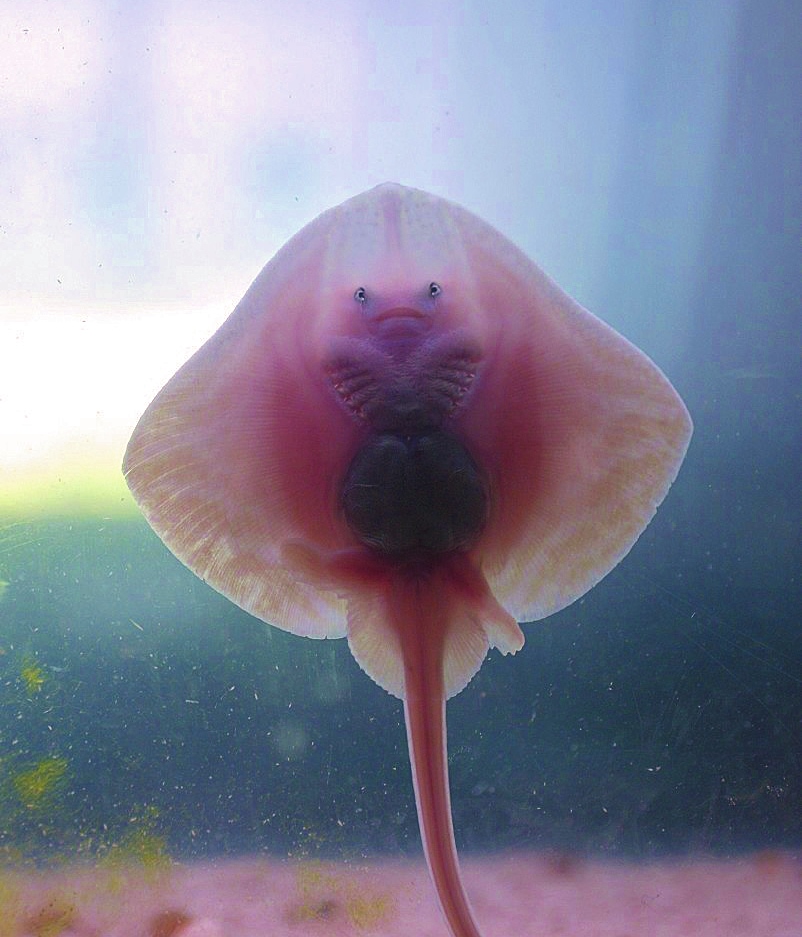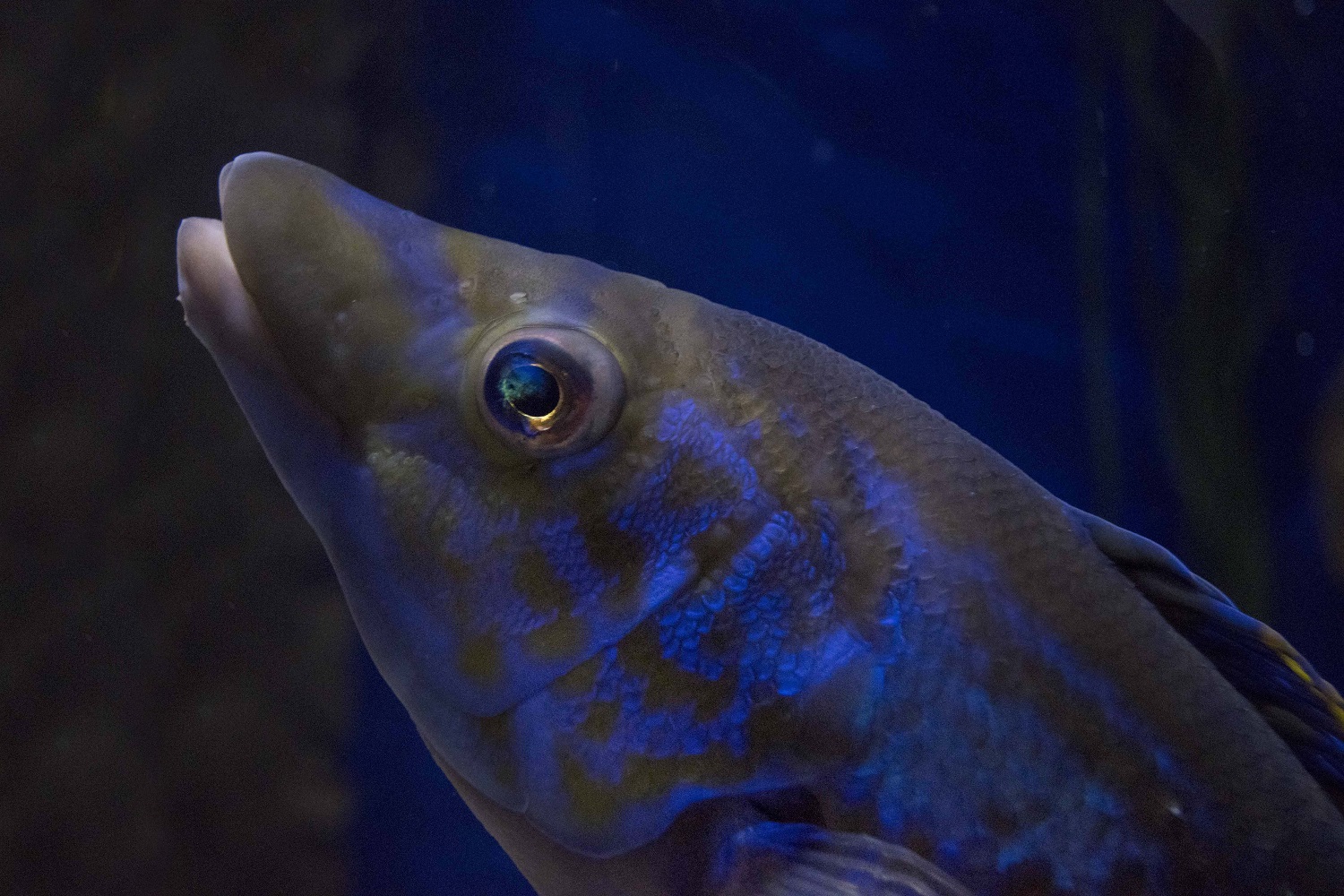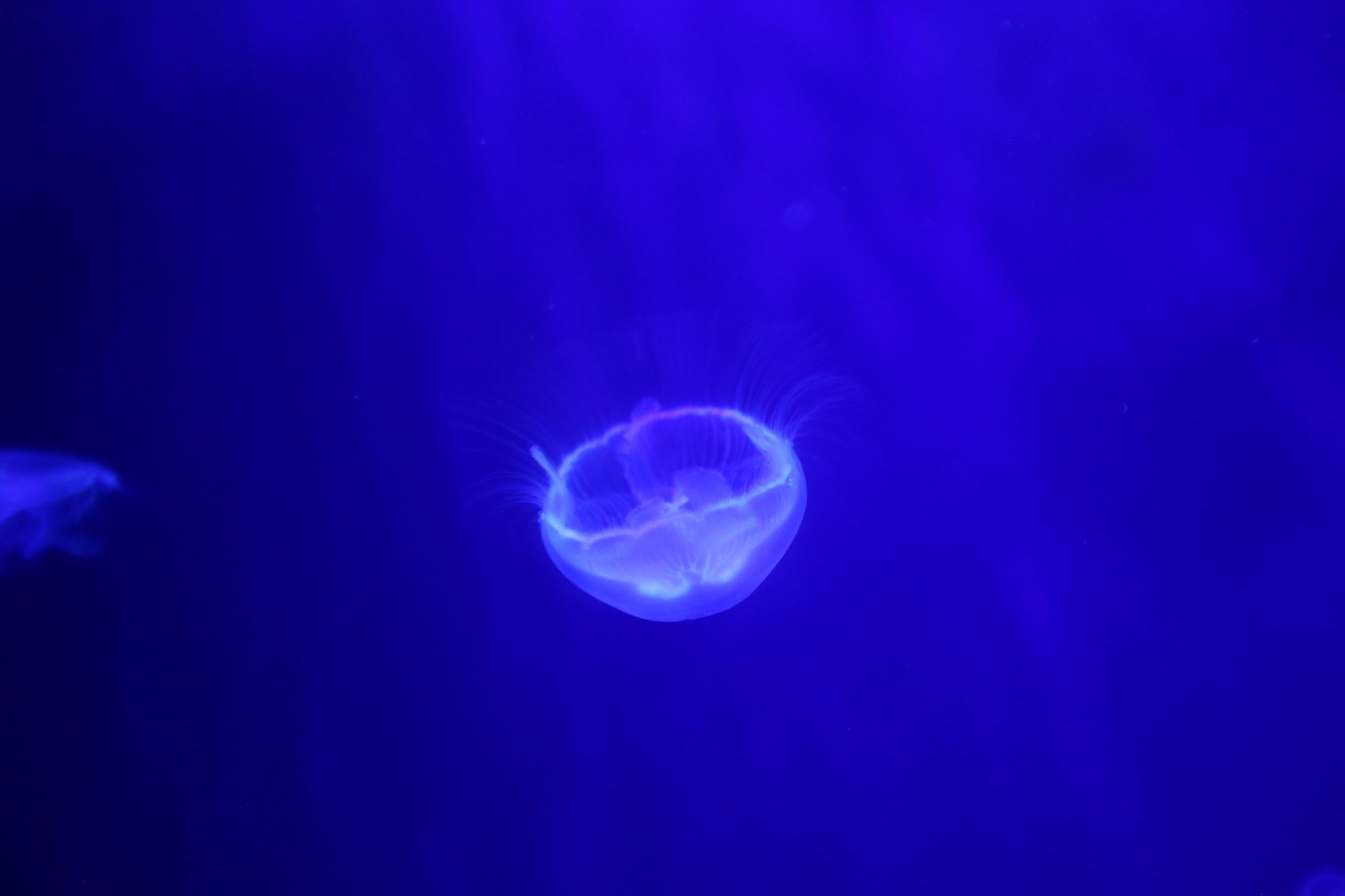
Captive Breeding
Captive breeding is an important aspect of Bristol Aquarium’s philosophy and an excellent indicator of the health and well-being of our animals.
This practise not only helps ease the pressure on wild populations but also allows more research to be done both on their behaviour and on ways to help safeguard their long term future in the wild.
Bristol Aquarium has successfully bred (and is still successfully breeding) a range of aquatic animals from jellyfish and seahorses to a whole host of shark and ray species!
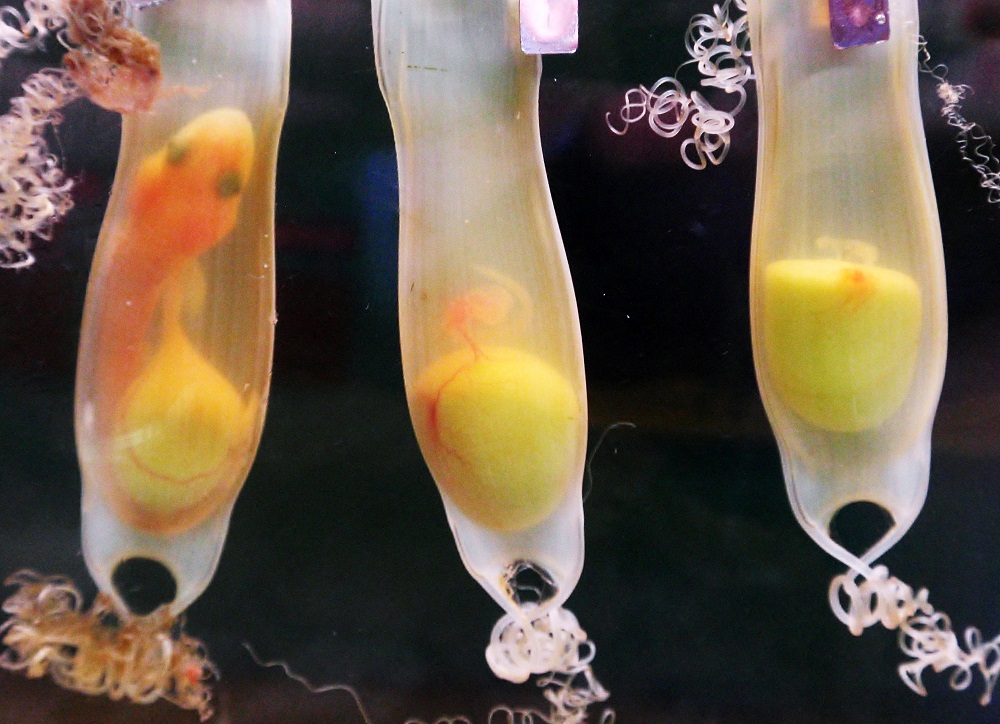
We collect ray and shark eggs from the tanks and nurture those that are fertile into juveniles!
Check out the stages of shark development inside their egg cases in the image above. Once big enough they’ll nibble their way out of the egg as tiny sharks! The curly bits on the ends are for the eggs to become entangled with seagrasses so they stay safe away from strong currents or predators.
Plus – take a look in our Nursery tanks during your next visit, from baby sharks and rays to cute little seahorses!
Animal Training
Bristol Aquarium is home to around 5,000 animals and each species has its very own specific needs and requirements. From sensitive seahorses to hardy crustaceans it is really important that we adapt their environments to best suit their lifestyles.
Intelligence under the sea is something that is often overlooked however studies have shown that fish are capable of complex behavioural interactions and understanding the world around them.
Pufferfish
Pufferfish have the intelligence to associate colours and shapes with different meanings – check out some of the amazing videos of pufferfish training online!
We have successfully trained our pufferfish to swim to a green hula hoop and wait underneath before receiving a food reward. That’s not all… When placing a green and a white hula hoop in the tank at the same time, the pufferfish know to only go to the green one – amazing!
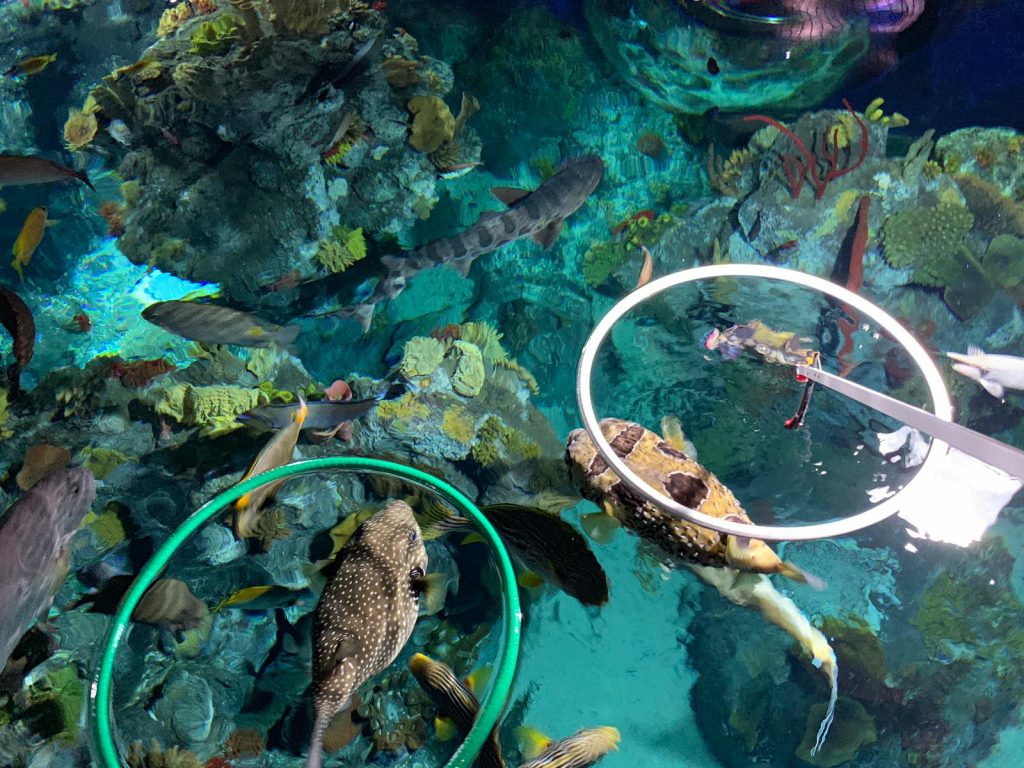
Octopus
Our Giant Pacific Octopus is trained and interacted with every day. One of the things we do is a physical interaction session where we encourage our octopus to come to the top of the tank and play with us. This allows us to visually health check with ease and also get them used to seeing our faces.
We use a range of toys to encourage our octopus to solve puzzles for access to food. This keeps them active and stimulated.
Did you know: Octopuses are capable of individual human facial recognition?
Our animals are provided with a whole range of enrichment to keep them mentally stimulated. We use a technique called ‘Operant Conditioning’ which means that we gradually build a connection between an object or a cue with the reward of food.
Port Jackson Sharks
We have successfully trained our Port Jackson Sharks to bop their nose against a blue ball for a food reward. This conditioning allows us to individually target-feed them to ensure they are all getting the right quantity of food to follow a healthy diet.
Archer Fish
Archer Fish have an incredible natural ability to shoot jets of water using a special groove in their mouths. They do this in the wild to knock insects and spiders from low hanging branches into the water for a quick meal.
We encourage this natural behaviour by replicating similar conditions in their display. We have created a target above the water’s surface where we put their favourite foods to be knocked off into the water.
Did you know: Archer Fish can account for the refraction of light through the water’s surface and angle their jet perfectly into position!

